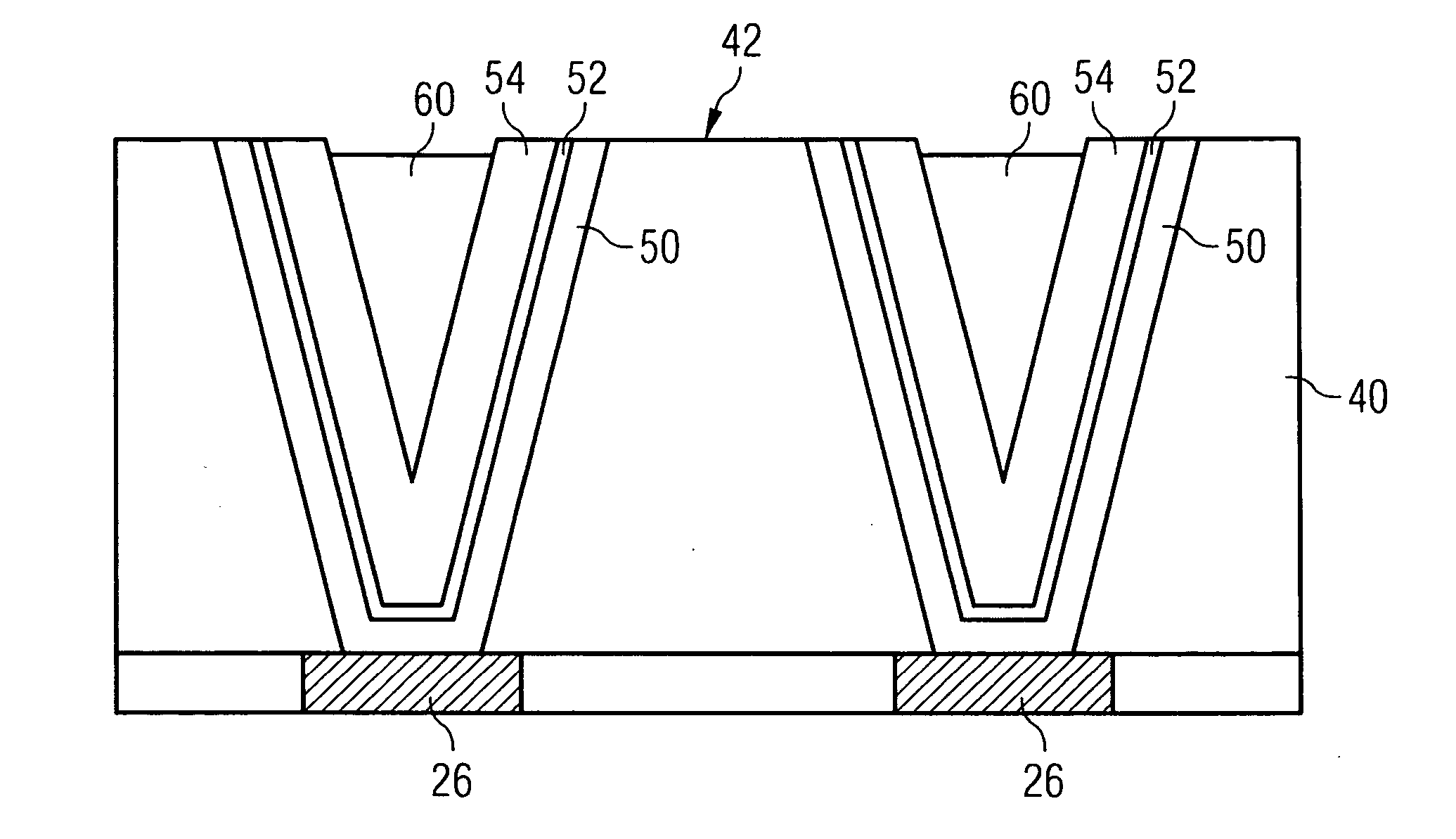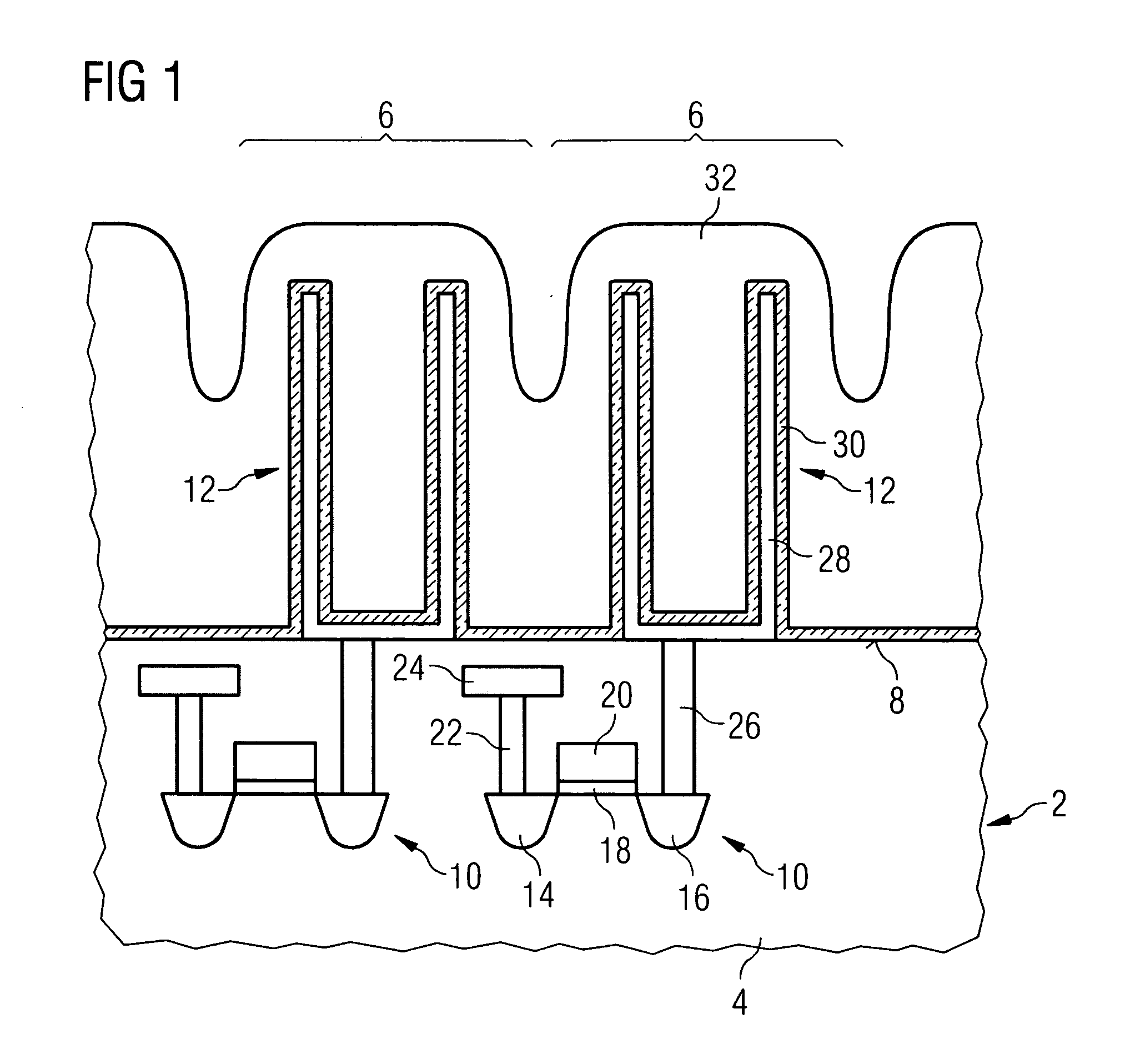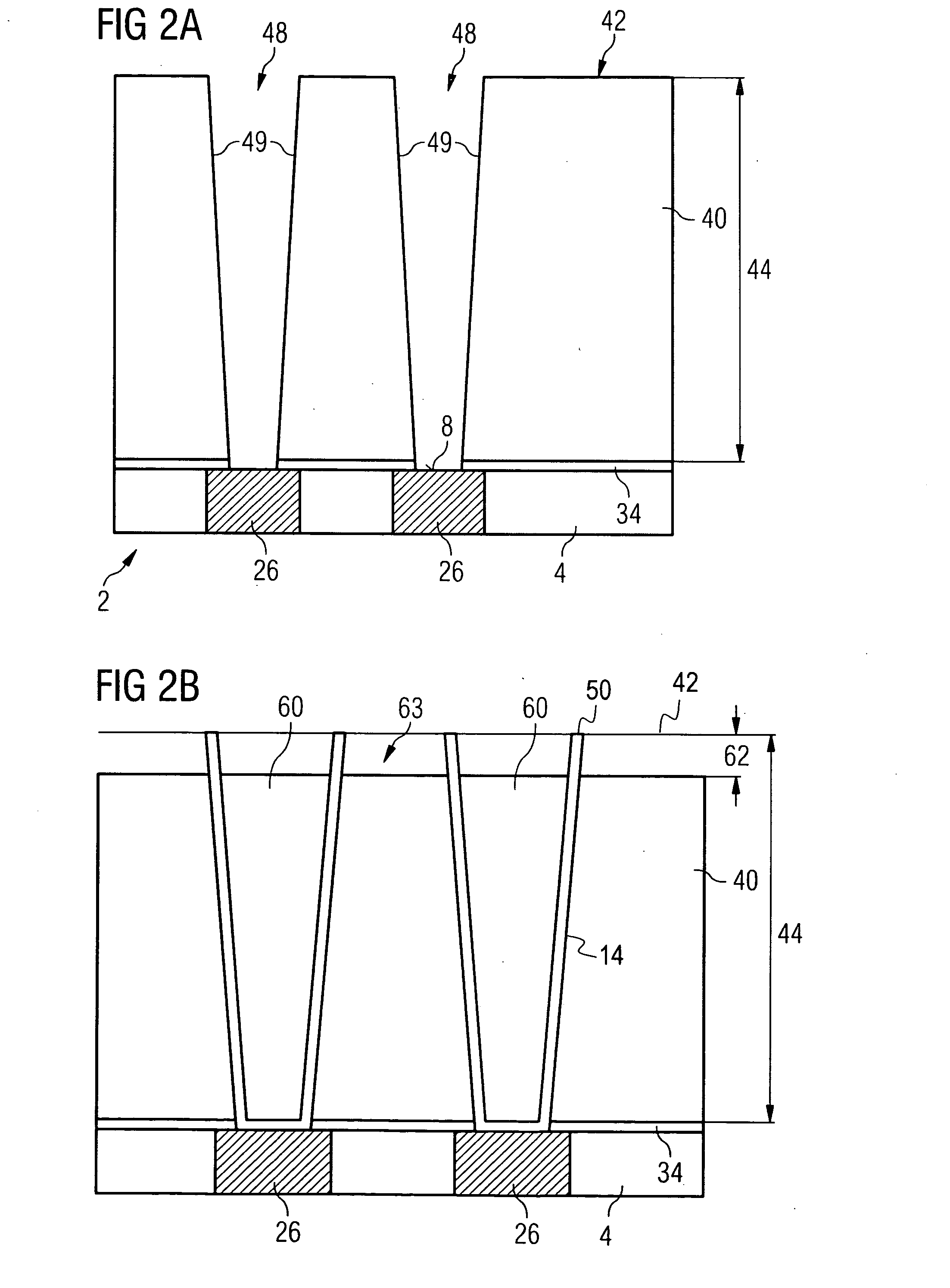Stacked capacitor and method for producing stacked capacitors for dynamic memory cells
- Summary
- Abstract
- Description
- Claims
- Application Information
AI Technical Summary
Benefits of technology
Problems solved by technology
Method used
Image
Examples
first embodiment
[0036] In a first process step, the method based on the invention provides the semiconductor wafer 2, which is used to produce the memory cells 6 with the stacked capacitors. The semiconductor wafer 2 comprises the substrate 4. In previous process steps, the transistors 10, bit lines 24 and other elements of the memory cell 6 are produced in the substrate 4. As FIG. 2A shows, the surface 8 of the substrate 4 has had an insulation layer 34 put on it, which leaves free the top of the contact plugs 26. The insulation layer 34 may comprise silicon nitride or silicon dioxide, for example. The contact plugs 26 preferably have a low resistance and are produced from amorphous silicon doped with arsenic, for example. In a production technology that has a minimum structure dimension of 70 nm, the contact plugs 26 are at a distance from one another, which is in the order of magnitude between 50 nm and 200 nm.
[0037] In another step, a masking layer 40 is deposited on the surface 8 of the substr...
second embodiment
[0052] In turn, the method based on the invention provides the semiconductor wafer 2 in a first process step, the semiconductor wafer being used to produce the memory cells 6 with the stacked capacitors 12. The semiconductor wafer 2 comprises the substrate 4.
[0053] As FIG. 3A shows, the surface 8 of the substrate 4 has had the insulation layer 34 put on it, leaving free some of the contact plugs 26. By way of example, the insulation layer 34 may comprise silicon nitride. The contact plugs 26 are made from polycrystalline silicon, for example.
[0054] In a further step, a masking layer 40 is deposited on the surface 8 of the substrate 4, on the insulation layer 34 and on the contact plugs 26. The masking layer 40 is provided by means of full-area deposition of a silicon dioxide layer, for example.
[0055] In the next step, a respective trench 48 is formed in the masking layer 40 for all memory cells 6. By way of example, the trenches 48 may be formed using a plasma etching process. To ...
third embodiment
[0074] In a first process step, the method based on the invention again provides the semiconductor wafer 2, which is used to produce the memory cells 6 with the stacked capacitors 12 (FIG. 1). The semiconductor wafer 2 comprises the substrate 4. In a further step, a masking layer 40 is deposited on the surface 8 of the substrate 4 and on the contact plugs 26.
[0075] In the next step, a respective trench 48 is formed in the masking layer 40 for all memory cells 6. Each of the trenches 48 is arranged above the associated contact plug 26 and extends from the top 42 of the masking layer 40 to the contact plugs 26 on the top 8 of the semiconductor wafer 2. Each of the trenches 48 has side walls 49 that may be perpendicular or slightly inclined, for example, as FIG. 5A shows.
[0076] As FIG. 5B shows, the conductive layer 50 is formed over the semiconductor wafer 2 in a subsequent process step.
[0077] In a subsequent process step, a dielectric layer 52 is formed over the semiconductor wafer...
PUM
 Login to View More
Login to View More Abstract
Description
Claims
Application Information
 Login to View More
Login to View More - Generate Ideas
- Intellectual Property
- Life Sciences
- Materials
- Tech Scout
- Unparalleled Data Quality
- Higher Quality Content
- 60% Fewer Hallucinations
Browse by: Latest US Patents, China's latest patents, Technical Efficacy Thesaurus, Application Domain, Technology Topic, Popular Technical Reports.
© 2025 PatSnap. All rights reserved.Legal|Privacy policy|Modern Slavery Act Transparency Statement|Sitemap|About US| Contact US: help@patsnap.com



